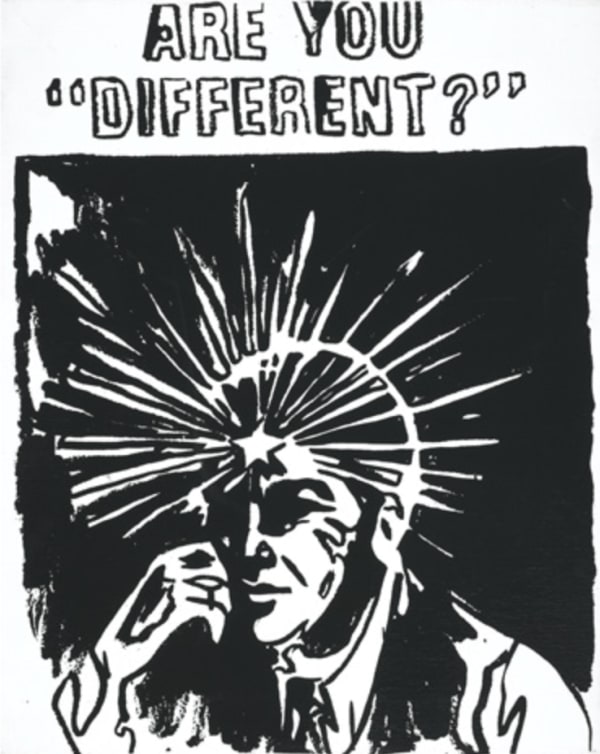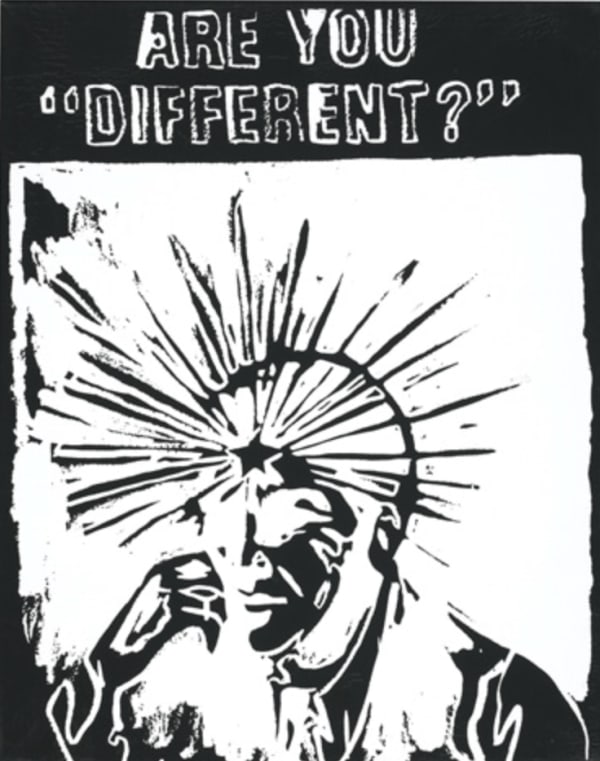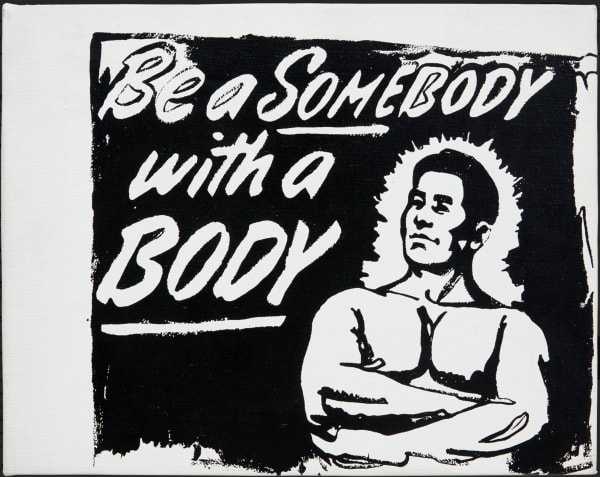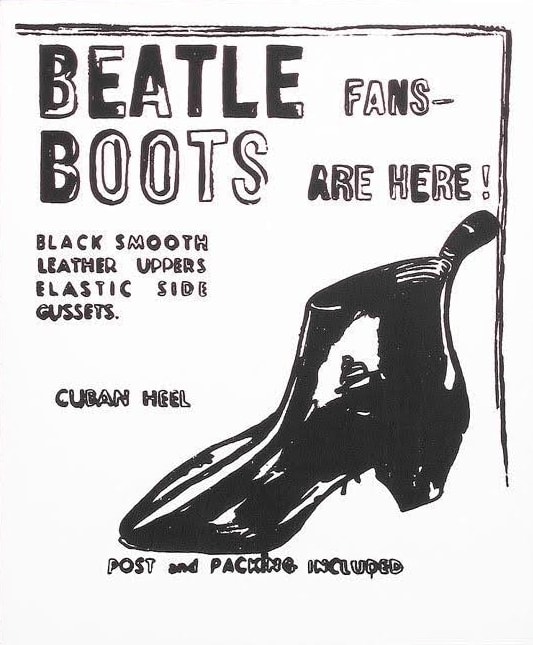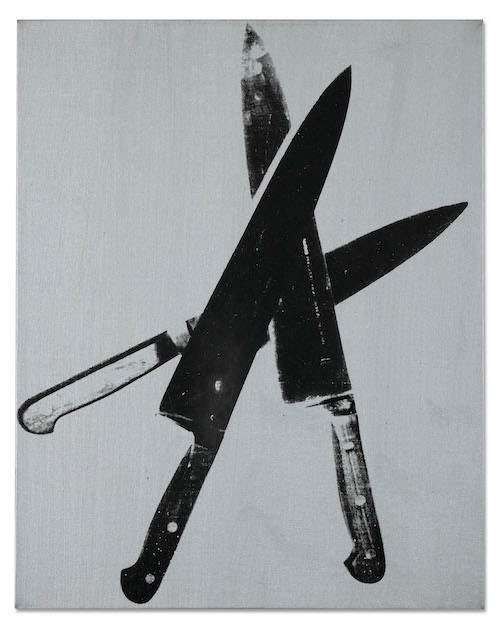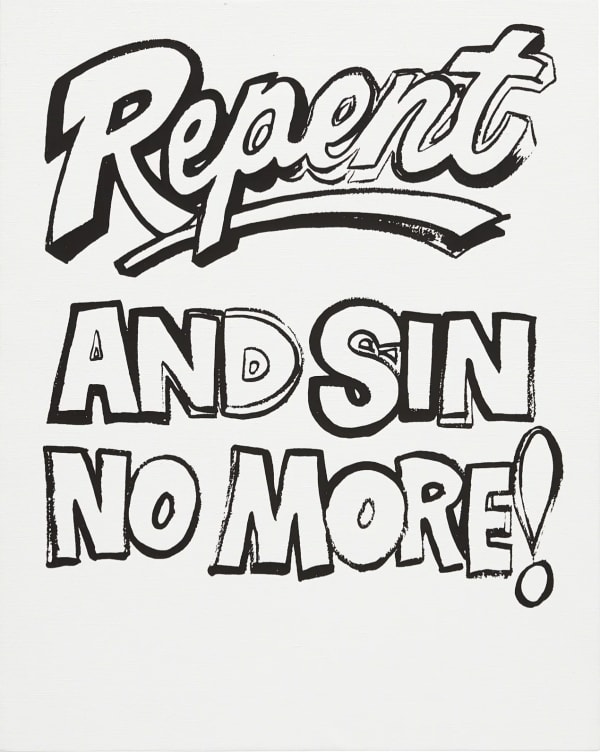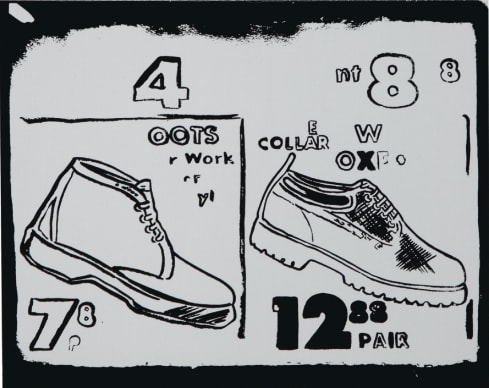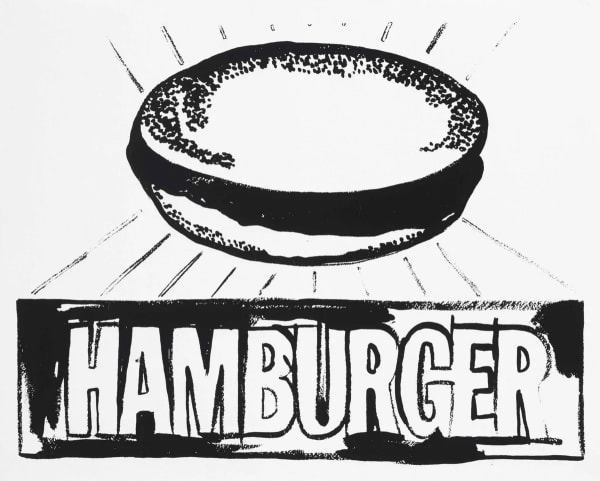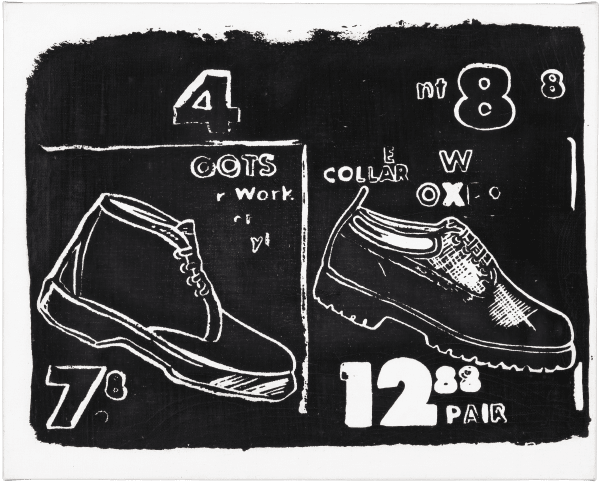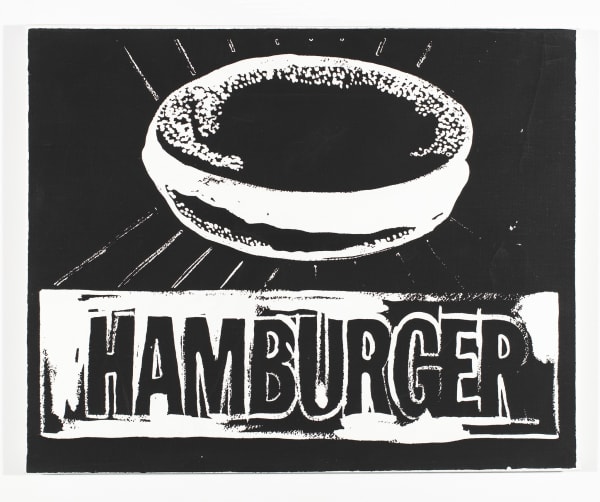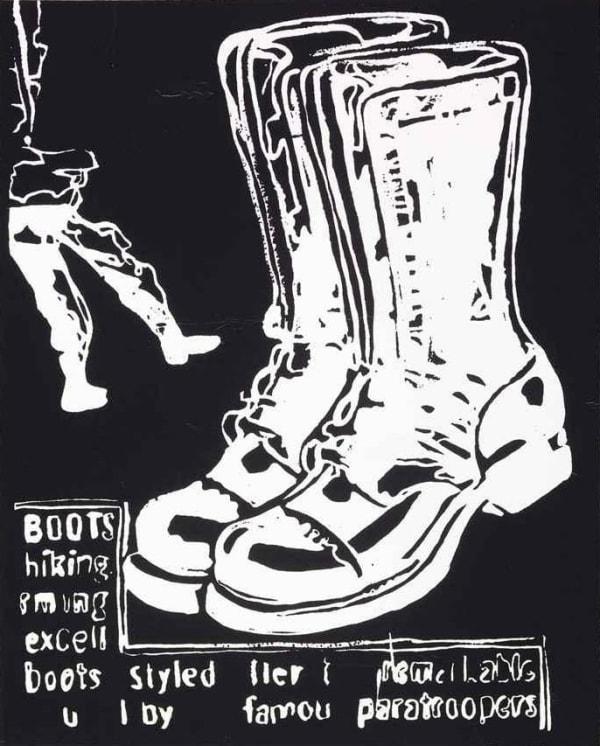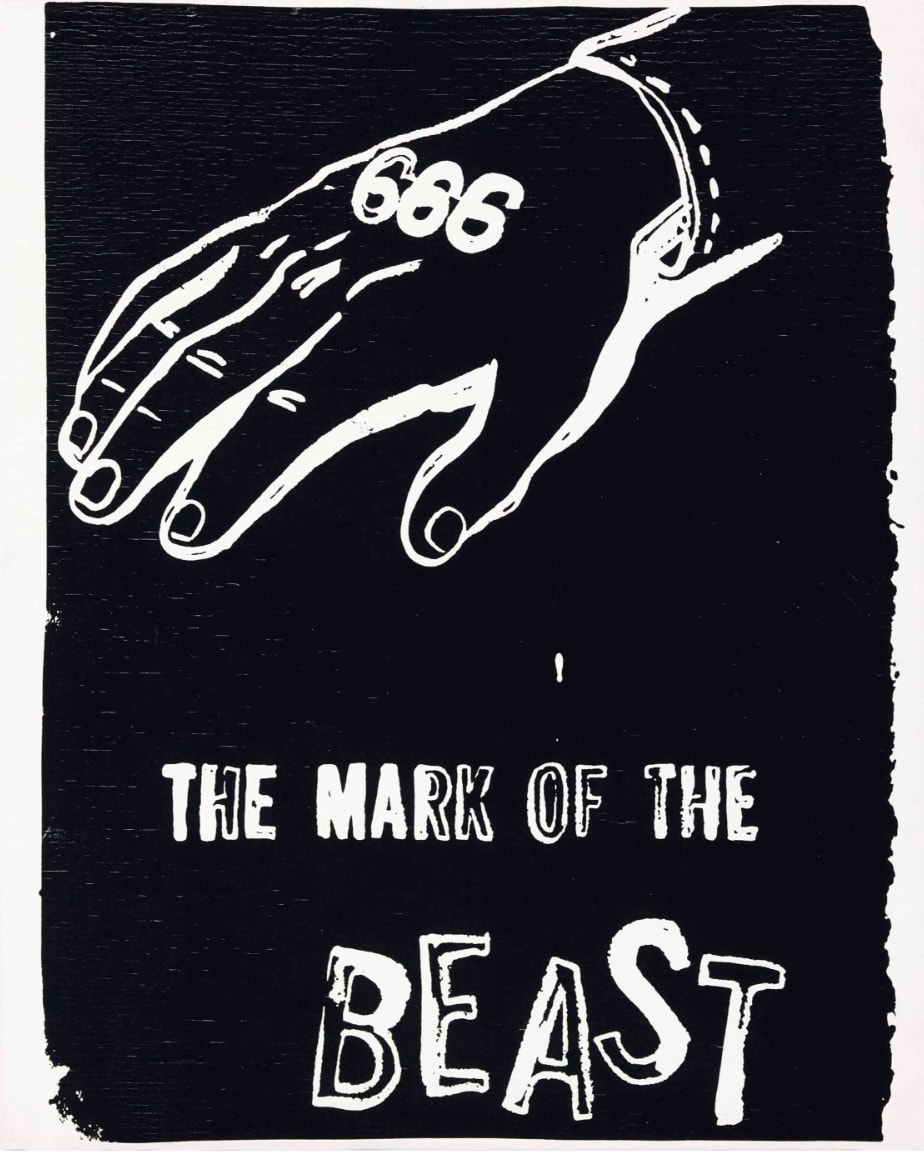
Andy Warhol
50.8 x 40.6 cm
Andy Warhol's Mark of the Beast is a compelling piece that delves into themes of religion, consumerism, and popular culture. Created in 1985, this artwork is part of Warhol's later body of work, which continued to explore the intersection of art and society.
In Mark of the Beast, Warhol presents a striking juxtaposition between the sacred and the secular. The title itself references the biblical concept of the mark of the beast, a symbol associated with evil and corruption in Christian theology. However, Warhol's interpretation of this concept takes on a contemporary twist, as he combines it with his iconic imagery of consumer products.
The central motif of the artwork is a large, stylized dollar sign overlaid with a black and white image of a wolf. The juxtaposition of these elements creates a visually arresting composition that challenges viewers to consider the relationship between wealth, power, and morality.
At its core, Mark of the Beast is a commentary on the pervasive influence of money and materialism in modern society. By incorporating the dollar sign, a symbol of capitalism and consumer culture, Warhol highlights the ways in which greed and excess have come to define contemporary life. The addition of the wolf, a symbol of cunning and predation, further underscores the predatory nature of unchecked capitalism.
Moreover, Mark of the Beast can be interpreted as a critique of the commodification of religion and spirituality. Warhol's use of religious symbolism, such as the concept of the mark of the beast, serves to underscore the ways in which sacred symbols and beliefs have been co-opted and commercialized in the pursuit of profit.
As with much of Warhol's work, Mark of the Beast prompts viewers to question the values and priorities of contemporary society. Through his bold imagery and provocative themes, Warhol challenges viewers to confront uncomfortable truths about the world around them, while also inviting them to reconsider their own relationship to money, power, and spirituality.
Overall, Andy Warhol's Mark of the Beast is a powerful and thought-provoking artwork that continues to resonate with viewers today. Through its striking imagery and layered symbolism, the piece invites viewers to contemplate the complex interplay between religion, consumerism, and morality in the modern world.
-
 Andy WarholAre You Different, 1985-6
Andy WarholAre You Different, 1985-6 -
 Andy WarholAre You Different Negative, 1985-6
Andy WarholAre You Different Negative, 1985-6 -
 Andy WarholArt Negative, 1985-6
Andy WarholArt Negative, 1985-6 -
 Andy WarholArt Positive, 1985-6
Andy WarholArt Positive, 1985-6 -
 Andy WarholBe A Somebody With A Body , 1985 - 86
Andy WarholBe A Somebody With A Body , 1985 - 86 -
 Andy WarholBeatle Boots Positive, 1986
Andy WarholBeatle Boots Positive, 1986 -
 Andy WarholKnives, 1981-82
Andy WarholKnives, 1981-82 -
 Andy WarholRepent and Sin No More, 1986-6
Andy WarholRepent and Sin No More, 1986-6 -
 Andy WarholRepent and Sin No More Negative, 1986-6
Andy WarholRepent and Sin No More Negative, 1986-6 -
 Andy WarholBe Somebody With A Body Negative, 1985 - 86
Andy WarholBe Somebody With A Body Negative, 1985 - 86 -
 Andy WarholWorking Boots Positive, 1985-86
Andy WarholWorking Boots Positive, 1985-86 -
 Andy WarholCampbell's Soup Can Tomato Soup, 1985
Andy WarholCampbell's Soup Can Tomato Soup, 1985 -
 Andy WarholHamburger Positive, 1986
Andy WarholHamburger Positive, 1986 -
 Andy WarholWorking Boots Negative, 1985-86
Andy WarholWorking Boots Negative, 1985-86 -
 Andy WarholGun, 1981-82
Andy WarholGun, 1981-82 -
 Andy WarholHamburger, 1986
Andy WarholHamburger, 1986 -
 Andy WarholHamburger Green, 1986
Andy WarholHamburger Green, 1986 -
 Andy WarholHamburger Negative, 1986
Andy WarholHamburger Negative, 1986 -
 Andy WarholMap Of Eastern U.S.S.R. Missile Bases Positive, 1985-86
Andy WarholMap Of Eastern U.S.S.R. Missile Bases Positive, 1985-86 -
 Andy WarholGimbels, 1983
Andy WarholGimbels, 1983 -
 Andy WarholParatrooper Boots Negative, 1985-86
Andy WarholParatrooper Boots Negative, 1985-86 -
 Andy WarholMap Of Eastern U.S.S.R. Missile Bases Negative, 1985-86
Andy WarholMap Of Eastern U.S.S.R. Missile Bases Negative, 1985-86 -
 Andy WarholParatrooper Boots Positive , 1985-86
Andy WarholParatrooper Boots Positive , 1985-86
Join our mailing list
* denotes required fields
We will process the personal data you have supplied in accordance with our privacy policy (available on request). You can unsubscribe or change your preferences at any time by clicking the link in our emails.
This website uses cookies
This site uses cookies to help make it more useful to you. Find out more about cookies.
